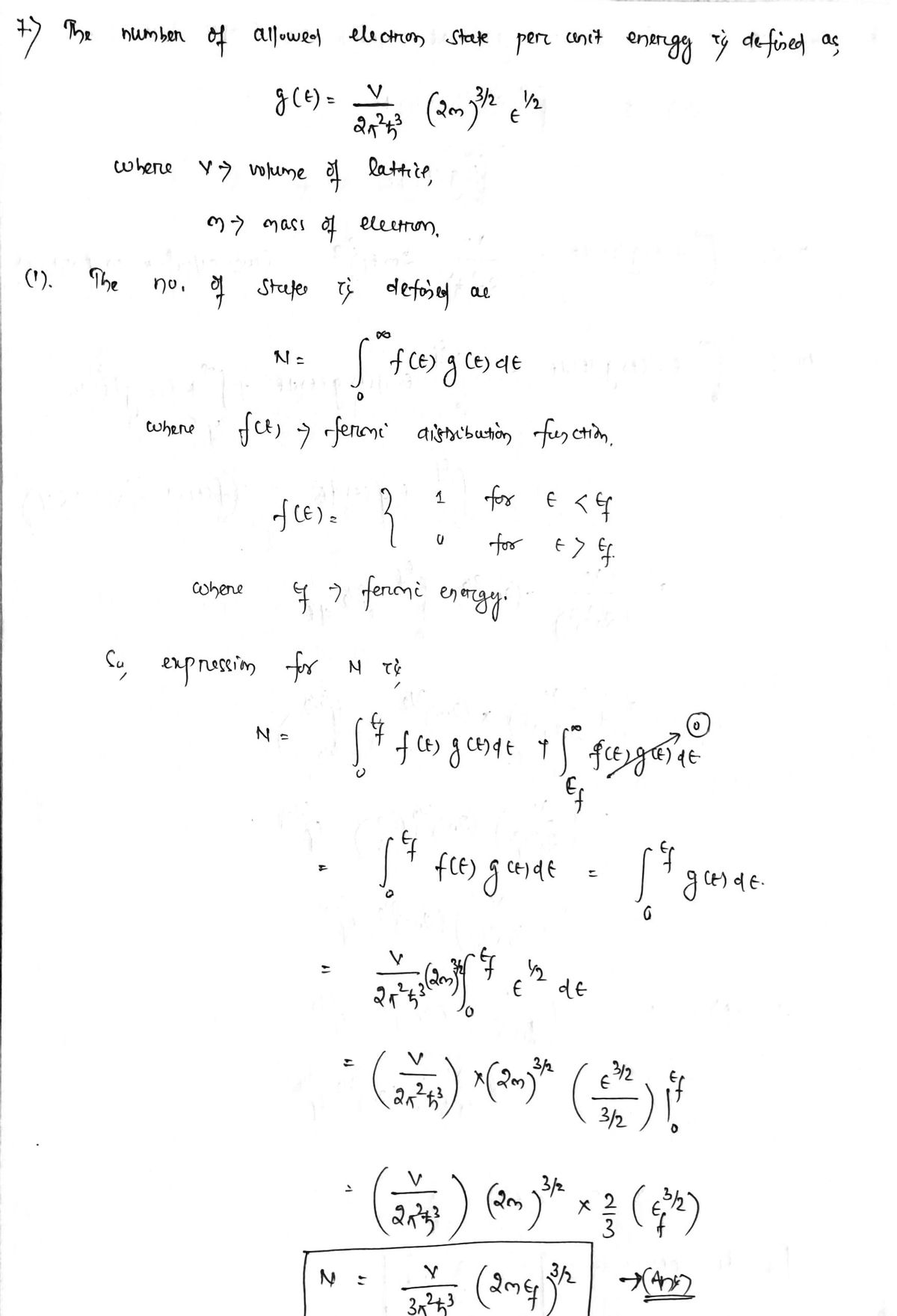Question

Transcribed Image Text:7) The number of allowed electron state per unit energy range is defined by:
g(s)=
(2m) ³/2/2
2z²h³
where Vis the volume of the lattice and m the mass of an electron. The lowest energy state of N electron
is obtained by filling the N states of lowest energy.
1. Using the density of state find an expression of the number of states N with energy less than
the Fermi energy & <&F.
2.
Show that the kinetic energy of a free electron gas at absolute zero is E=
E=N&y.
ĆE
av
the Fermi energy, EF and the electron concentration n - N/V.
4. The atomic number of potassium (K) is Z = 19, the mass density, pm = 856 kg/m³ and the
atomic mass is 39.098 g.
i) Write the electronic configuration of K atom and determine the valence.
ii) Calculate the electron concentration n-N/V and the Fermi energy, &F.
3. Derive an expression of the pressure p=
and the bulk modulus B=-V-
av
in terms of
iii) Estimate the contribution of the conduction electrons to the bulk modulus, B for potassium
and compare your answer to the experimental measured bulk modulus 0.37x10¹0 N/m².
Expert Solution
arrow_forward
Step 1

Step by stepSolved in 4 steps with 4 images

Knowledge Booster
Similar questions
- The main feature of photo-detectors made of high energy gap semiconductors is that: O a. They have very small dark current. O b. Their absorption coefficients are quite large. O c. A large number of photons is needed to boost their resulting current. O d. Thin samples are needed for such detectors O e. NON of the given choices is correct.arrow_forward3 The Fermi-Dirac distribution provides the fraction of electrons that can be found for a given electron energy and temperature of the material. Silicon is a widely use semiconductor for computer processors and GPUs, with a band gap of 1.11 eV at room temperature (293 K). a) What is the Fermi energy of Silicon at room temperature? b) Calculate the electron concentration (total number of electrons) at 0.6 eV above the fermi level (in the conduction band) of one mol of silicon (each silicon atom contributes 4 electrons).arrow_forwardH:47)arrow_forward
- 1. Cohesive energy of bcc and fcc neon. Using the Lennard-Jones potetial, calculate the ratio of the cohesive energies of neon in the bcc and fcc structures (Ans. 0.958). The lattice sums for the bcc structures are Σ;pi12 = 9.11418; Σ;pij6 = 12.2533arrow_forward4. Consider a simple cubic system with lattice constant a = 5 Å. Determine the atom density (atoms/cm²) for the (100), (110), and (111) planes.arrow_forwardQ.2: Calculate the lougest wavelength for electron revolving in the fifth excited silicon atom, drops into third state and then to first excited state, if the nucleus charge is 4.8X10 C. Q.3: Find the conductivity, if the resistance is 3 kn, length is 10 m, area is 2 m', and the carrying curent is 2 mA. Q4: Find the fraction of the body centered cubic unit cell volume filled with hard spheres as shown in figure below if the total volume of cell (cubic) is 343 cm.arrow_forward
arrow_back_ios
arrow_forward_ios